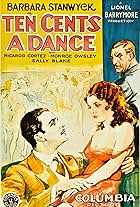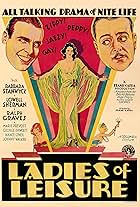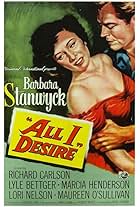IMDb RATING
7.3/10
1.2K
YOUR RATING
By focusing on the lives of three down-and-out alcoholic transients, the film creates a wrenching portrait of the tragic hopelessness of life on "The Bowery" in New York City.By focusing on the lives of three down-and-out alcoholic transients, the film creates a wrenching portrait of the tragic hopelessness of life on "The Bowery" in New York City.By focusing on the lives of three down-and-out alcoholic transients, the film creates a wrenching portrait of the tragic hopelessness of life on "The Bowery" in New York City.
- Nominated for 1 Oscar
- 3 wins & 1 nomination total
- Director
- Writers
- All cast & crew
- Production, box office & more at IMDbPro
Storyline
Did you know
- TriviaThe Third Avenue El, featured prominently in this film, was closed a couple months before filming began, but demolition had not yet began. That is why no trains are seen are heard on it in this picture.
- Quotes
Ray Salyer, Himself: I got to have another drink.
Gorman Hendricks, Himself: Yeah, you gotta have flop too.
Ray Salyer, Himself: That's for sure.
- ConnectionsFeatured in Maltin on Movies: Project X (2012)
Featured review
This movie must have seemed very startling to audiences at the time, when "homelessness" wasn't yet a concept (only the somewhat more abstract, accusatory "bums" or "winos").
Like many "documentaries" made before the 1960s, when a more purist approach was introduced, it is partly staged and acted, albeit by nonprofessional principals who were purportedly playing themselves, surrounded on real locations by real people who clearly aren't following any script. Thus the line between staged drama, improv and documentary is thoroughly blurred.
You could call this falsification by strict verite standards, but that would deny "In the Bowery's" extraordinary capture of a particular underside that mainstream society (let alone movies) preferred to ignore until the 60s myriad social-change movements focused more attention on the urban poor and disenfranchised.
The loose "story" focuses on ruggedly handsome thirtysomething ex-railroad worker Ray. He lands in NYC, buys drinks for some Bowery drunks, passes out on the street and has his threadbare suitcase of possessions stolen by Gorman, the one who'd befriended him. Ray does day-laboring gigs, attends a rescue mission sermon, sleeps at a charity flophouse (where most sleep on newspapers on the floor) and tries to avoid the demon alcohol--but he free-falls nonetheless.
It's worth reading the Wikipedia article about the movie, which offers a number of interesting facts about its creation and reception. (It won a Venice Fest award and an Oscar nomination, though the unflattering if poignant expose of Skid Row also got it attacked by the New York Times and other significant voices.) Supposedly Ray Salyer was "offered a Hollywood contract but chose to remain on the Bowery"--which sounds just-possible, but also unlikely enough to require further proof.
This is a unique and striking memento of a disappeared world (though the issues remain very relevant--only the neighborhoods and racial mix have changed).
Like many "documentaries" made before the 1960s, when a more purist approach was introduced, it is partly staged and acted, albeit by nonprofessional principals who were purportedly playing themselves, surrounded on real locations by real people who clearly aren't following any script. Thus the line between staged drama, improv and documentary is thoroughly blurred.
You could call this falsification by strict verite standards, but that would deny "In the Bowery's" extraordinary capture of a particular underside that mainstream society (let alone movies) preferred to ignore until the 60s myriad social-change movements focused more attention on the urban poor and disenfranchised.
The loose "story" focuses on ruggedly handsome thirtysomething ex-railroad worker Ray. He lands in NYC, buys drinks for some Bowery drunks, passes out on the street and has his threadbare suitcase of possessions stolen by Gorman, the one who'd befriended him. Ray does day-laboring gigs, attends a rescue mission sermon, sleeps at a charity flophouse (where most sleep on newspapers on the floor) and tries to avoid the demon alcohol--but he free-falls nonetheless.
It's worth reading the Wikipedia article about the movie, which offers a number of interesting facts about its creation and reception. (It won a Venice Fest award and an Oscar nomination, though the unflattering if poignant expose of Skid Row also got it attacked by the New York Times and other significant voices.) Supposedly Ray Salyer was "offered a Hollywood contract but chose to remain on the Bowery"--which sounds just-possible, but also unlikely enough to require further proof.
This is a unique and striking memento of a disappeared world (though the issues remain very relevant--only the neighborhoods and racial mix have changed).
- How long is On the Bowery?Powered by Alexa
Details
Box office
- Gross US & Canada
- $41,802
- Opening weekend US & Canada
- $13,236
- Sep 19, 2010
- Gross worldwide
- $41,802
- Runtime1 hour 5 minutes
- Color
- Sound mix
- Aspect ratio
- 1.37 : 1
Contribute to this page
Suggest an edit or add missing content























